You are using an out of date browser. It may not display this or other websites correctly.
You should upgrade or use an alternative browser.
You should upgrade or use an alternative browser.
Planted aquarium LED lighting?
- Thread starter Xak
- Start date
 Help Support Candle Power Flashlight Forum
Help Support Candle Power Flashlight Forum
I'd be very interested in other peoples experiences on the subject. There are comercial led light hoods for marine tanks but they are very expensive and not likely going to do much for fresh water planted tanks. I remeber seeing a thread on a forum several years ago where a guy made red and blue led arrays for a planted tank as an experiment and it worked but red and blue aren't going to look very nice. I think I could build something at a reasonable cost using crees from dx but who knows if it would emit the right spectrum for photosynthesis.
zed
Newly Enlightened
Take a look at this:
http://www.practicalfishkeeping.co.uk/forum/showthread.php?t=9765
I'd be interested in building something to replace my tube lights.
http://www.practicalfishkeeping.co.uk/forum/showthread.php?t=9765
I'd be interested in building something to replace my tube lights.
Well we had a thread on LED growlights: https://www.candlepowerforums.com/threads/204092
Only blue and long-wave "deep red" are really effective wavelengths for photosynthesis. Most reds are too short to cover the narrow photosynthetic response peak.
This would grow the aquarium plants on much less power, but may not be visually appealing. Perhaps change to white to watch it? Or add some blue/deep red around the white array?
Only blue and long-wave "deep red" are really effective wavelengths for photosynthesis. Most reds are too short to cover the narrow photosynthetic response peak.
This would grow the aquarium plants on much less power, but may not be visually appealing. Perhaps change to white to watch it? Or add some blue/deep red around the white array?
Well I'm building my own and will document the differences in growth of my plants. Currrently the tank is lit by a PAR38 CFL-23w at 3000K it is getting 2 RGB sets and 3 XR-E Q5
I started a thread on it in Fixed Lighting
I started a thread on it in Fixed Lighting
Well, like the PAR chart shows the problem is the chloro-a long-side peak is 670 nm. No RGB has a red that long. LEDEngin makes a big powerful red in that range though. These other "UFO" growlights are using masses of deep red small-package LEDs. Unfortunately I don't see a ready supplier of those thing.
Well, I've been testing a lot with the use of LED-only lighting above my main planted freshwater tank recently, and noticed that the plants really require more of the low blue than the red. Without it they simply die off.
It's still quite hard to find decent LED-bars or strips to use for this purpose. You can only buy panels (30x30cm and such) or Tube-replacements (T8/T5) and all are extremely expensive per lumen. I just refuse to go for those commercial solutions. Usually their packaging is already crap to begin with. I don't need 24V, 110V AC or 220V AC, I just want 12 VDC.
Turns out all the AC-powered LED-tubes/panels/grow-light blink! And not a little, even (see here in Dutch).
I had already skipped PWM dimming (to mimic sunrise and sundown with) and went for a timer circuit using a sequence of on and off 'channels'. So I sure don't want blinking LED for my biotopes. The sun doesn't blink either..
OK, so I found out the most effective (Lumen/Watts/photosynthesis) ratio for freshwater underwater plants is around 5:2, where 5 consists of dark blue peaking around 428 nm (for most plants) and 2 is deep red peaking around 664 nm.
If we would have, say, a flexible or rigid LED-strip, waterproof (at least IP65) similar to these types, they would be perfect with LEDs at those frequencies. Nobody seems to sell or even make those LEDs, which is strange, considering their huge market potential.
I have yet to find a decent LED frequency response spectrum for aquarium lighting that is commercially available now. Of course you can come close by using the lowest blue and highest red LEDs and use many cheap ones, but the thing is, as was already mentioned above:
You do not want the red-blue (i.e. purple) color to overrule all the lighting in your aquarium. Which is why you want perfect LEDs peaking at 428 nm and 664 nm so you can use the minimum amount possible. Saves you a lot of power too.
In my research I have not found suitable LEDs yet. Preferably plug-and-play modules, or at least pre-wired LEDs for 12 VDC. Most annnoying is the fact that very few sellers of LED-products mention anything about the frequencies of the LEDs used, let alone show a spectrogram. About time those specs become more common on websites (and ebay!).
It's still quite hard to find decent LED-bars or strips to use for this purpose. You can only buy panels (30x30cm and such) or Tube-replacements (T8/T5) and all are extremely expensive per lumen. I just refuse to go for those commercial solutions. Usually their packaging is already crap to begin with. I don't need 24V, 110V AC or 220V AC, I just want 12 VDC.
Turns out all the AC-powered LED-tubes/panels/grow-light blink! And not a little, even (see here in Dutch).
I had already skipped PWM dimming (to mimic sunrise and sundown with) and went for a timer circuit using a sequence of on and off 'channels'. So I sure don't want blinking LED for my biotopes. The sun doesn't blink either..
OK, so I found out the most effective (Lumen/Watts/photosynthesis) ratio for freshwater underwater plants is around 5:2, where 5 consists of dark blue peaking around 428 nm (for most plants) and 2 is deep red peaking around 664 nm.
If we would have, say, a flexible or rigid LED-strip, waterproof (at least IP65) similar to these types, they would be perfect with LEDs at those frequencies. Nobody seems to sell or even make those LEDs, which is strange, considering their huge market potential.
I have yet to find a decent LED frequency response spectrum for aquarium lighting that is commercially available now. Of course you can come close by using the lowest blue and highest red LEDs and use many cheap ones, but the thing is, as was already mentioned above:
You do not want the red-blue (i.e. purple) color to overrule all the lighting in your aquarium. Which is why you want perfect LEDs peaking at 428 nm and 664 nm so you can use the minimum amount possible. Saves you a lot of power too.
In my research I have not found suitable LEDs yet. Preferably plug-and-play modules, or at least pre-wired LEDs for 12 VDC. Most annnoying is the fact that very few sellers of LED-products mention anything about the frequencies of the LEDs used, let alone show a spectrogram. About time those specs become more common on websites (and ebay!).
Well, I've been testing a lot with the use of LED-only lighting above my main planted freshwater tank recently, and noticed that the plants really require more of the low blue than the red. Without it they simply die off.
It's still quite hard to find decent LED-bars or strips to use for this purpose. You can only buy panels (30x30cm and such) or Tube-replacements (T8/T5) and all are extremely expensive per lumen. I just refuse to go for those commercial solutions. Usually their packaging is already crap to begin with. I don't need 24V, 110V AC or 220V AC, I just want 12 VDC.
Turns out all the AC-powered LED-tubes/panels/grow-light blink! And not a little, even (see here in Dutch).
I had already skipped PWM dimming (to mimic sunrise and sundown with) and went for a timer circuit using a sequence of on and off 'channels'. So I sure don't want blinking LED for my biotopes. The sun doesn't blink either..
OK, so I found out the most effective (Lumen/Watts/photosynthesis) ratio for freshwater underwater plants is around 5:2, where 5 consists of dark blue peaking around 428 nm (for most plants) and 2 is deep red peaking around 664 nm.
If we would have, say, a flexible or rigid LED-strip, waterproof (at least IP65) similar to these types, they would be perfect with LEDs at those frequencies. Nobody seems to sell or even make those LEDs, which is strange, considering their huge market potential.
I have yet to find a decent LED frequency response spectrum for aquarium lighting that is commercially available now. Of course you can come close by using the lowest blue and highest red LEDs and use many cheap ones, but the thing is, as was already mentioned above:
You do not want the red-blue (i.e. purple) color to overrule all the lighting in your aquarium. Which is why you want perfect LEDs peaking at 428 nm and 664 nm so you can use the minimum amount possible. Saves you a lot of power too.
In my research I have not found suitable LEDs yet. Preferably plug-and-play modules, or at least pre-wired LEDs for 12 VDC. Most annnoying is the fact that very few sellers of LED-products mention anything about the frequencies of the LEDs used, let alone show a spectrogram. About time those specs become more common on websites (and ebay!).
Hi Julius,
That is a very interesting experience. Can you update about what you found out after you made this post?
best wishes,
Romi
AnAppleSnail
Flashlight Enthusiast
There are forums that concentrate on this. The reef-growing people (Coral, not drugs) have a lot of information out. The hobby is shifting from arc lamps as undisputed master, to a mix that includes high-power LED arrays.
Obijuan Kenobe
Flashlight Enthusiast
There are forums that concentrate on this. The reef-growing people (Coral, not drugs) have a lot of information out. The hobby is shifting from arc lamps as undisputed master, to a mix that includes high-power LED arrays.
This is a good post.
obi
If your interest is in planted tanks then the requirements are quite different from what reef tanks require. You may want to check out APC (aquatic plant central) ot TPT (the planted tank). LEDS are used quite widely. T-5 flourescents were the standards for awhile with a small portion using plant specific Metal halide lights. Now the cutting edge seems to be LEDs and for some uber specialists early adopters, there are plasma lights just now on the scene.
Here is a good light for planted aquariums, salt and fresh water. I dont have a picture of fresh water but I will try to get a picture up. Led's may require some acclimation for your plants as they are different from other light sources. A good method for acclimation is to start the LED's high above the aquarium and slowly bring them closer over time. Here is a current LED fixture.
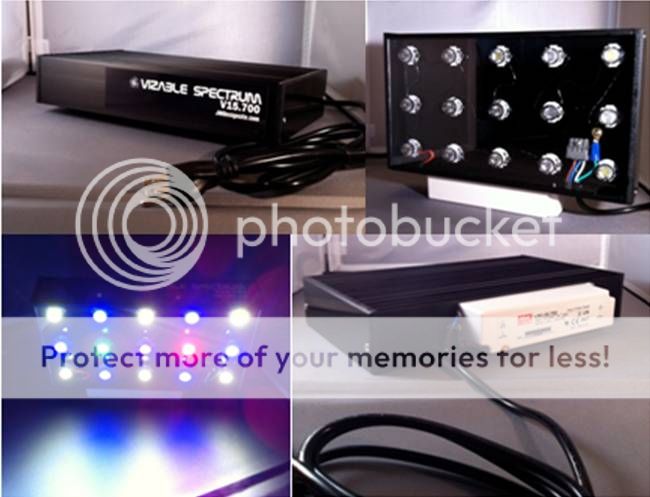
4 Months under LED lights
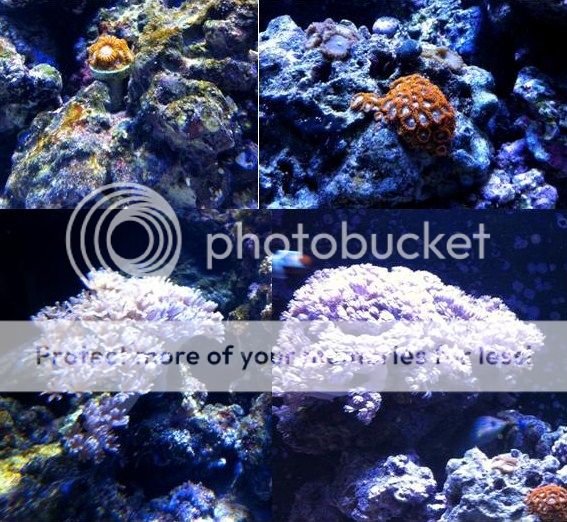
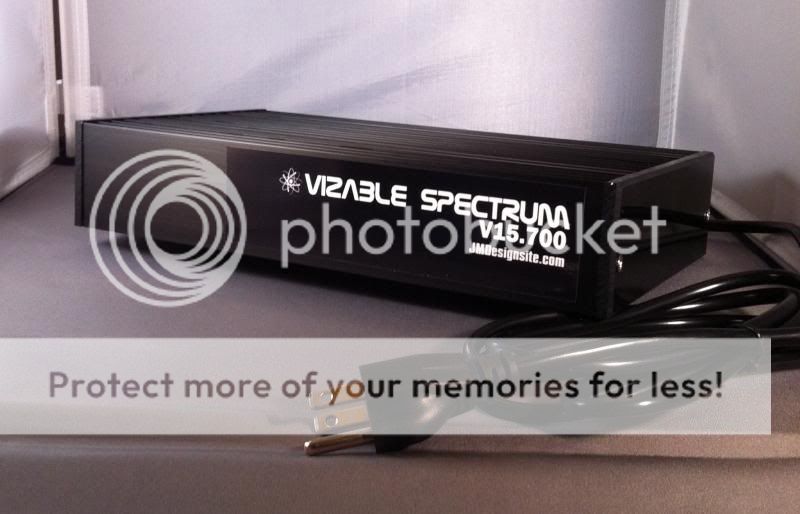
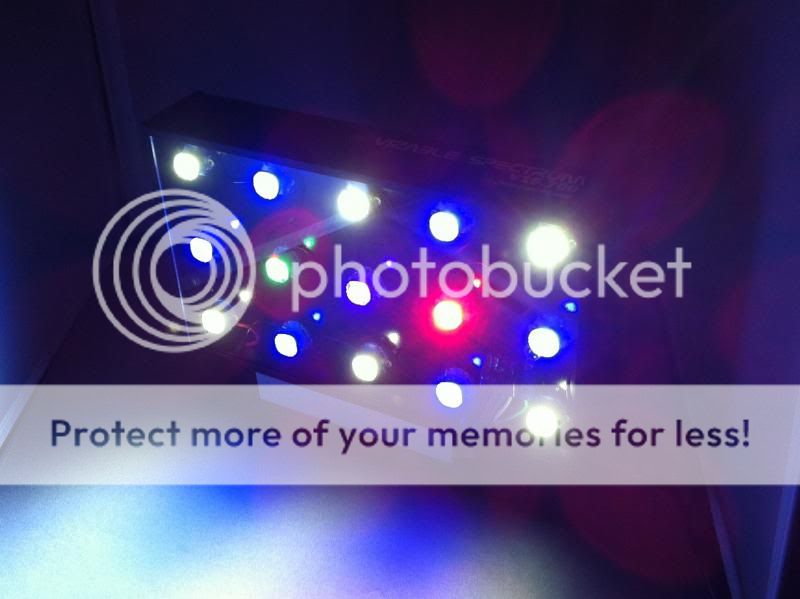
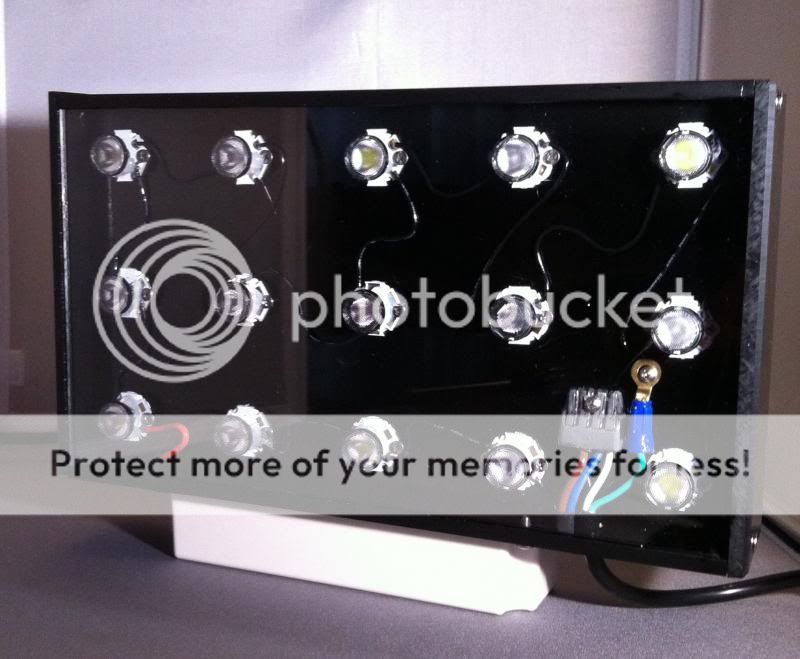
(Source) http://www.jmdesignsite.com/ Vizable Spectrum Reef LED Aquarium light
The Fixture uses Cree XT-E led's a whole bunch of different colors. Plus it looks like it has a UV LED in it.

4 Months under LED lights




(Source) http://www.jmdesignsite.com/ Vizable Spectrum Reef LED Aquarium light
The Fixture uses Cree XT-E led's a whole bunch of different colors. Plus it looks like it has a UV LED in it.
MichaelKelley
Newly Enlightened
- Joined
- Jun 24, 2013
- Messages
- 4
Lovely post, but plz also suggest how to install this or make this setup... 
Large quote deleted. No need to quote the post immediately above yours in its entirety - Norm

Large quote deleted. No need to quote the post immediately above yours in its entirety - Norm
Last edited by a moderator:
Changchung
Flashlight Enthusiast
I build a aquarium light system for a friend, I keep it simple, 12 modules 3x5050 each module, blue, red and white, a RGB led controller, each chanel to each color and a 12volts 5amp to drive them, easy, you can choice some different colors between R/B/W those colors are the best to this propose...




Last edited:
AnAppleSnail
Flashlight Enthusiast
Bump, to thank Changchung. I am actually looking to build a Plant Starter Grow Light for *TOMATOES* ,, and *PEPPERS*. This will be to get them well started and established early in the season. Oh, and Cucumbers too.
Love LEDs
I have had great results from my T8 fluorescent lamps for starting plants. I don't have pictures, but I was up last night repotting tomatoes (Again). I have been drooling over the idea of a slick MakersLED heatsink with drivers & dimmer switch+timer. I would go with a set of 3' bars running about 20W per foot of LED. I already have 12 32W t8 bulbs on my starter shelf (4 per level), and that really 'brightens things up' in the room. 480W fluorescent just doesn't have the same cool factor as a sleek LED bar.
My hydroponic tomato grown under fluorescent had JUST started to grow tiny green fruits after 6 months when I had to kill it off. Low light is bad for tomatoes.
I had the same question till I went to costco the other day.
I ended up getting this kit:
http://www.amazon.com/dp/B008COVFUA/?tag=cpf0b6-20
The Sylvania 72344 Mosaic Flexible Light Kit.
This was on sale for $29.99 at Costco in Canada.
Hooked it up myself and it was bright enough, plus you can switch the colors around since it is RGB.
I ended up getting this kit:
http://www.amazon.com/dp/B008COVFUA/?tag=cpf0b6-20
The Sylvania 72344 Mosaic Flexible Light Kit.
This was on sale for $29.99 at Costco in Canada.
Hooked it up myself and it was bright enough, plus you can switch the colors around since it is RGB.
LIZARDFISH
Newly Enlightened
Hello, I am new to CPF. I am an avid aquarist and flashlight collector! I thought this would be a good post to break the ice. I am currently using a Kessil led 10k over my 20 gallon planted aquarium. I have baby's tears, anubias, and a few other high light and co2 demanding plants. Everything is super healthy and I am trimming the baby's tears every two weeks. The light produces very little heat and has excellent shimmer. Some plants I have tried don't like the 10k that much, but everyone that has the Amazon sun model is amazed by that light. I just like the way the bluer light shows off my fish.
Similar threads
- Replies
- 27
- Views
- 2K
